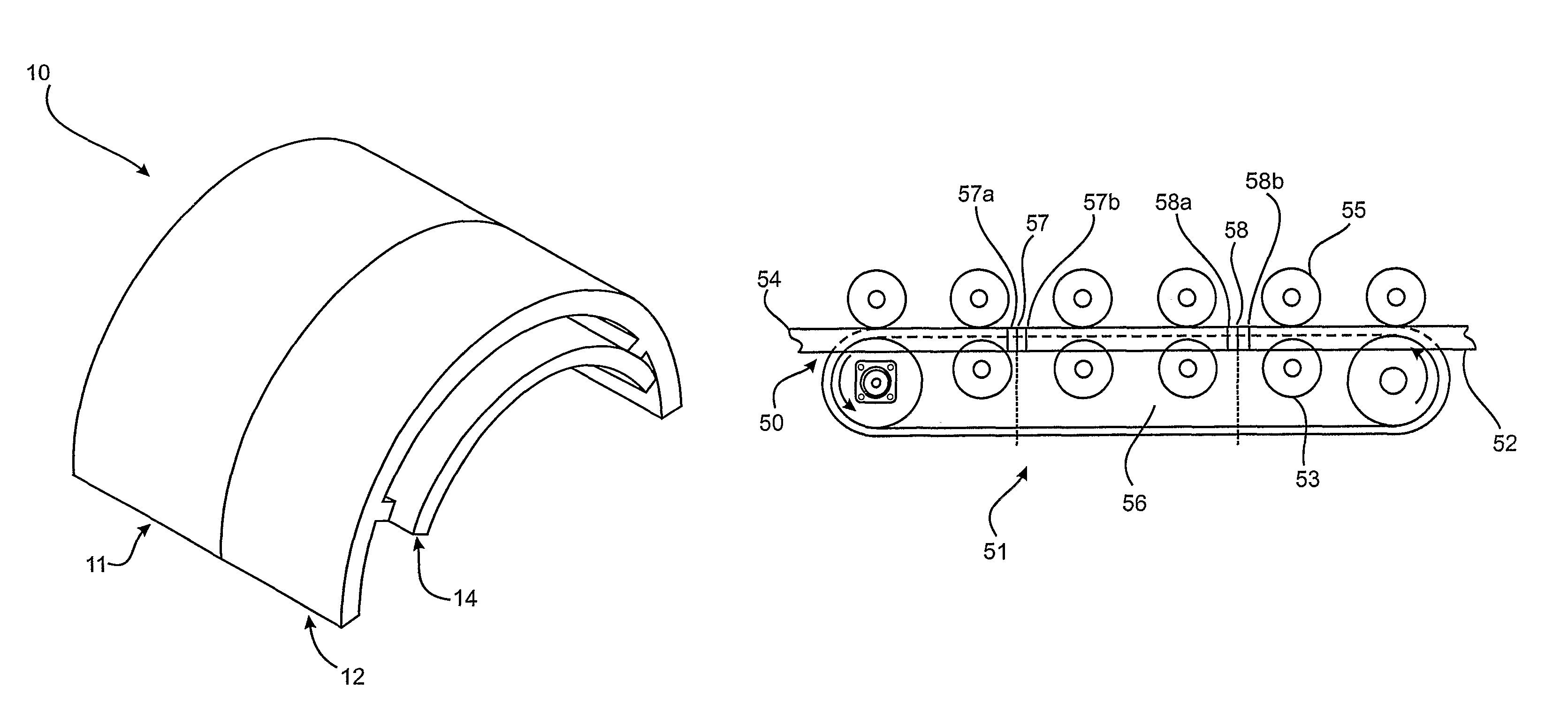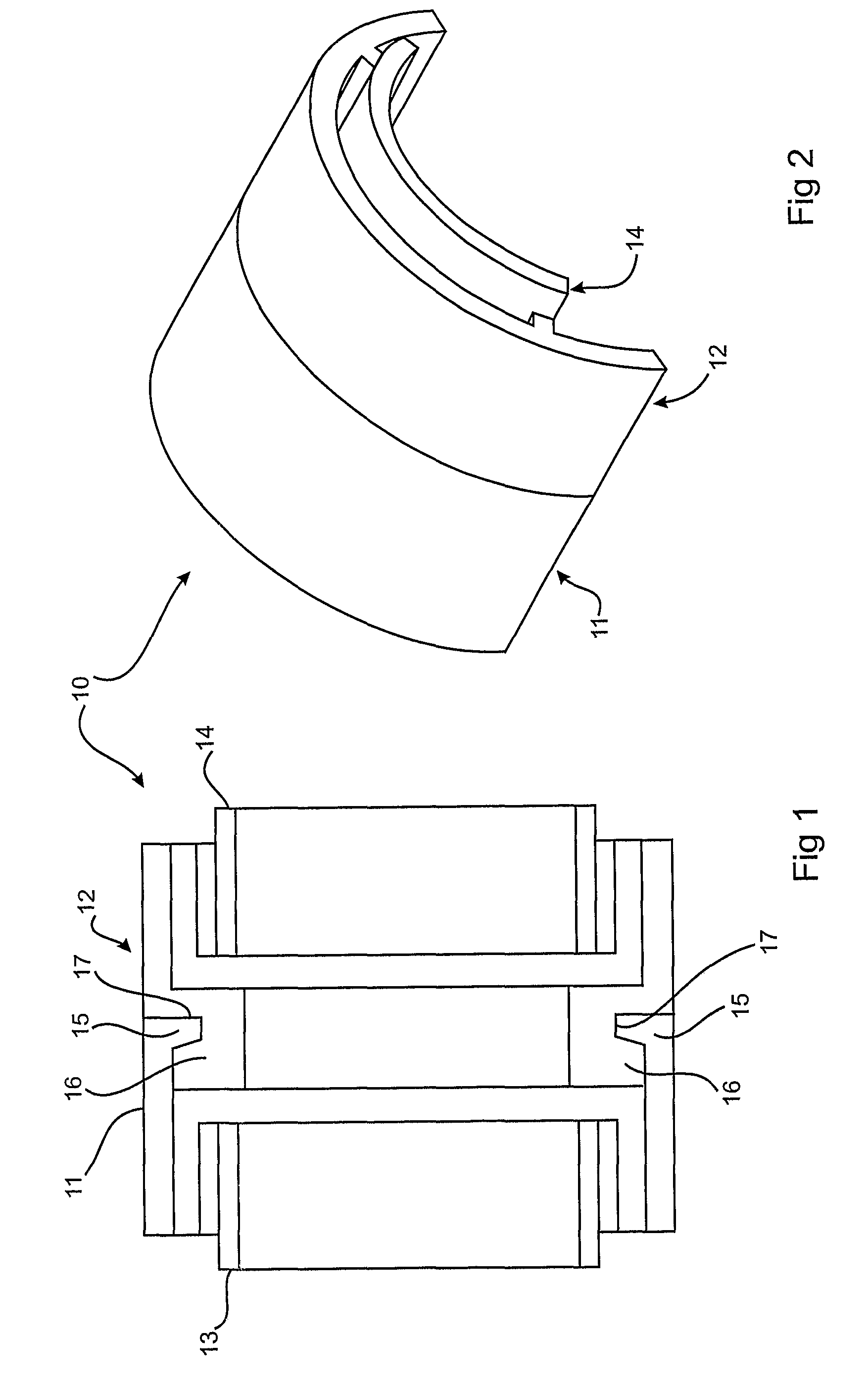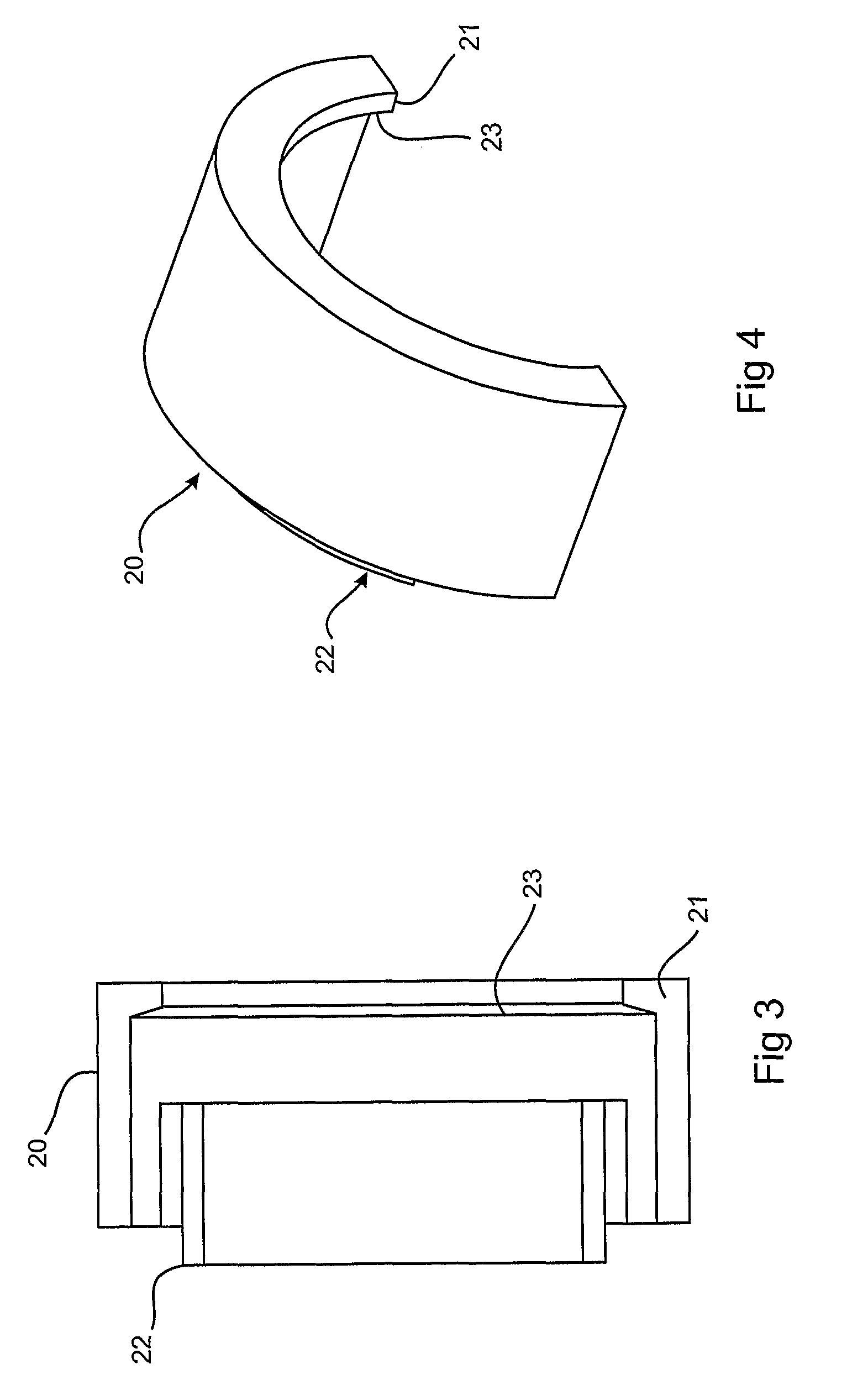Coupling arrangement and system for continuous haulage conveyor
a conveyor and coupling arrangement technology, applied in the direction of conveyors, mechanical conveyors, packaging, etc., can solve the problems of increasing the unit increasing the cost of rom material purchase, and having an enormous detrimental effect on the viability of mining operations, so as to reduce the loss of production associated know-how, reduce downtime, and be convenient to extend or shorten the
- Summary
- Abstract
- Description
- Claims
- Application Information
AI Technical Summary
Benefits of technology
Problems solved by technology
Method used
Image
Examples
Embodiment Construction
[0056]FIG. 1 shows male 11 and female 12 coupling portions of an embodiment of the coupling device 10 according to a preferred embodiment of the present invention.
[0057]FIG. 2 shows a corresponding perspective top view of the same coupling device 10. As illustrated in FIG. 1, the male coupling portion 11 includes the raised portion 15 extending around an inner circumference of an end of the male coupling portion. This projecting portion 15 is arranged to engage with a corresponding channel 17 of the same profile provided in the female coupling portion 12. As can be seen, the profile of the protruding portion 15 and corresponding channel 17 are configured to be the same size to provide engagement which positively holds the two portions together whilst minimizing movement. This is further enhanced by a return portion 16 being provided on the female portion 12. In the embodiment shown, both the male and female portions include a bridge 13, 14, each arranged to receive a respective tens...
PUM
 Login to View More
Login to View More Abstract
Description
Claims
Application Information
 Login to View More
Login to View More - R&D
- Intellectual Property
- Life Sciences
- Materials
- Tech Scout
- Unparalleled Data Quality
- Higher Quality Content
- 60% Fewer Hallucinations
Browse by: Latest US Patents, China's latest patents, Technical Efficacy Thesaurus, Application Domain, Technology Topic, Popular Technical Reports.
© 2025 PatSnap. All rights reserved.Legal|Privacy policy|Modern Slavery Act Transparency Statement|Sitemap|About US| Contact US: help@patsnap.com



